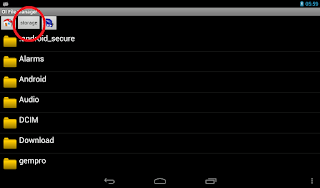The calibration uses the F200 Precision Thermometer from ASL. The thermometer is connected to the Beagle computer using a cable made up of 1 USB to Serial converter and 1 Female to Female null modem cable, similar to the cable used for the Hurricane calibration.
You will need to set the connection device on the Thor settings screen , if you are using the USB-Serial converter, select ttyUSB0 as shown below:
Open the navigation side panel and select Calibration:
If you get an error, check you cable and connection setting. Also ensure that the F200 probe is inserted correctly, you're on channel 1, using Celsius.
Press start to begin the calibration which is fully automated and will take about 1 hour. When the calibration has finished the results screen will be shown allowing you to fill out a melting point calibration certificate.
Thor stores the calibration results on disk, the Auto Melt and Video Recorder screens display the calibrated temperature. The Heater Control screen uses the raw temperature from the SMP electronics.
Getting Good Calibration
The F200 probes are quite long with a lot of metal exposed to the air, this makes the probe less accurate and less precise due to stem losses. The probe will measure lower block temperatures and repeatability will be affected by the ambient air temperature.
To counter the stem losses you need to lag the probe with fibre glass wool, you may find some ceramic tubes with the F200 kit that can help to lag the probe. Also remove the white ceramic block as this exposes the part of the probe immediately above the block.
With good lagging, you should get repeatable calibration results that are within 0.1°C accuracy from 60 to 200°C.
Technical Details
The calibration is split into to stages Calibration and Verification. Both stages take take measurements at the following set points 60, 100 and 200°C.
When each set point is reached, the program will wait for 5 minutes to allow the temperature of the F200 probe to settle. After that 10 readings are taken over a minute and averaged.
The calibration will work out a quadratic equation to perfectly match the F200 and SMP50 temperatures.
During the verification stage, the calibrated SMP50 temperature will be used* and shown in the calibration results screen.
*The display will show the raw temperature from the SMP50, but the verification program will be using the calibrated temperature.
User Calibration
The SMP40 has 3 temperature calibrations and the SMP50 will be no different. The first calibration is an electronic resistance calibration and is performed on the heater PCB by the supplier.
The second calibration is the factory calibration performed by the production staff. The third calibration is an User Calibration. The user cal adjusts the temperatures after they've been adjusted by the factory calibration.
Thor does not support User Calibrations but the underlying software framework makes it easy to set the user calibration, see TemperatureControl.java















































